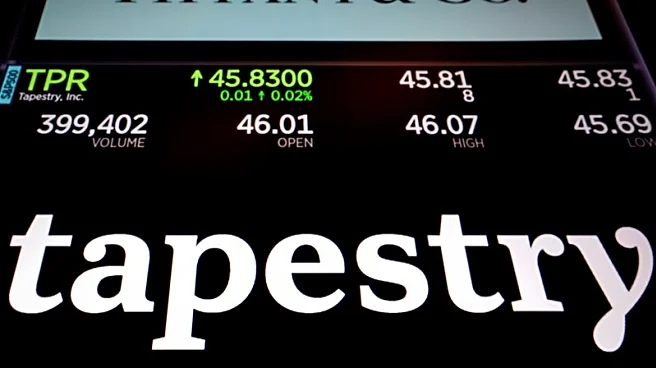What's Happening?
The silver market is experiencing a significant deficit, marking the fifth consecutive year of shortfall. In 2025, demand for silver is projected to reach 1.21 billion ounces, while supply, including mine production, recycling, and net hedging, is expected
to fall short at approximately 1.03 billion ounces. This results in a 182 million-ounce deficit, the largest in over a decade. Industrial fabrication, particularly in solar photovoltaics and electronics, is driving demand, consuming 732 million ounces, which is 60.5% of total demand. Physical investment demand has also surged, with silver bar and coin minting up 12% to 285 million ounces, driven by retail investors in North America and Europe seeking inflation hedges and portfolio diversification.
Why It's Important?
The persistent deficit in the silver market has significant implications for various sectors. Silver's classification as a critical mineral by the U.S. Department of the Interior highlights its essential role in renewable energy, defense electronics, and medical technologies. This designation could lead to increased federal funding for domestic exploration and research into recycling. Additionally, geopolitical trends such as China's carbon neutrality goals and India's industrialization of silver use are further driving demand. The scarcity of silver is becoming a strategic concern, affecting industries reliant on its supply and potentially leading to higher prices and increased volatility in the market.
What's Next?
The silver market is likely to continue facing challenges in balancing supply and demand. Innovations in recycling and alternative supply solutions, such as urban mining and e-waste recycling, are being explored to address the deficit. However, these efforts may only slow demand growth rather than reverse it. The development of new primary silver mines is underway, but production is not expected before 2027. Analysts predict silver prices could average between $36 and $42 per ounce in 2026, with potential for higher prices if supply disruptions occur or if demand from green technologies accelerates.
Beyond the Headlines
The silver market's shift from surplus to deficit reflects broader economic and environmental trends. As industries increasingly rely on silver for technological advancements, its scarcity could lead to strategic shifts in resource management and investment strategies. The potential for deep-sea and space mining, though speculative, indicates the lengths to which industries might go to secure silver supplies. The evolving market dynamics underscore the importance of sustainable practices and innovation in resource extraction and recycling.















